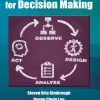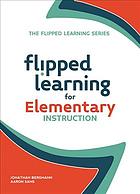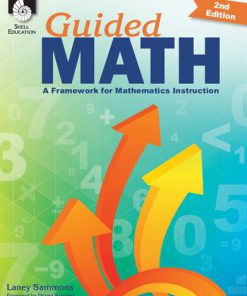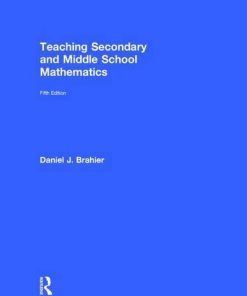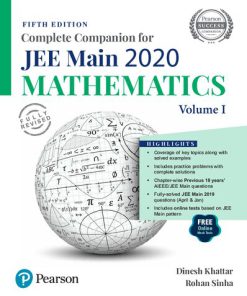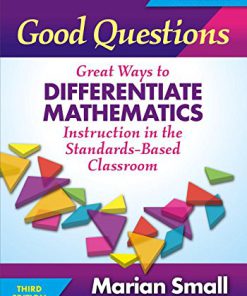Direct Instruction Mathematics 5th Edition by Marcy Stein,Diane Kinder,Jerry Silbert,Kristen Rolf,Douglas Carnine 013471122X 9780134711225
$50.00 Original price was: $50.00.$25.00Current price is: $25.00.
Direct Instruction Mathematics 5th Edition by Marcy Stein,Diane Kinder,Jerry Silbert,Kristen Rolf,Douglas Carnine – Ebook PDF Instant Download/Delivery:013471122X,9780134711225
Full download Direct Instruction Mathematics 5th Edition after payment
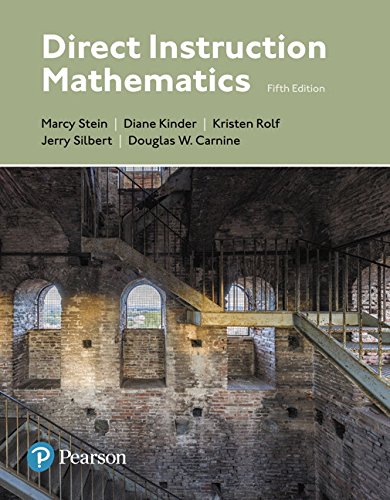
Product details:
ISBN 10:013471122X
ISBN 13:9780134711225
Author:Marcy Stein,Diane Kinder,Jerry Silbert,Kristen Rolf,Douglas Carnine
The information needed to design effective supplemental mathematics instruction and to evaluate and modify commercially developed math programs. Direct Instruction Mathematics (Subscription), 5/e, provides teachers with evidence-based teaching strategies for supplementing mathematics instruction for students from preschool through Grade 8, and for older students and adult learners who are struggling with basic skills. Included are procedures for evaluating and modifying currently available commercially developed math programs, plus systematic procedures for addressing both conceptual understanding and procedural fluency for topics represented by the Common Core State Standards (CCSS). The new edition includes an updated chapter on research, new content related to probability and data analysis, and video links to teaching demonstrations for many of the teaching formats. Direct Instruction Mathematics contains Instructional Sequence and Assessment Charts that can serve as the basis for designing diagnostic tests as well as for constructing goals and objectives.
Direct Instruction Mathematics 5th Table of contents:
Part I Perspective
Chapter 1 Direct Instruction
Learning Outcomes
Mathematical Proficiency
Instructional Design
Sequence of Skills and Concepts
Explicit Instructional Strategies
Preskills
Example Selection
Practice and Review
Instructional Delivery
Progress Monitoring
Presentation Techniques
Signals
Pacing
Error-Correction Procedures
Diagnosis and Remediation
Instructional Language
Sequencing Guidelines Applied to Language Instruction
Teach Preskills of a Strategy Before the Strategy
Teach Easy Skills Before More Difficult Ones
Separate the Introduction of Information or Strategies that are Likely to be Confused
Apply What You Learned
Chapter 2 Research Support for Direct Instruction Mathematics
Learning Outcomes
The Need for Excellent Math Instruction
Current Performance of U.S. Math Students
Research on Direct Instruction
Research Recommendations for Math Instruction
Apply What You Learned
Chapter 3 Curriculum Evaluation and Modification
Learning Outcomes
The Curriculum Adoption Process
Time Allocation and Committee Responsibilities
Screening Process
Topics for Curriculum Evaluation
General Program Design
Does the program provide a logical sequence of skills and concepts?
Are Objectives Stated as Observable and Measurable Behaviors?
Does the Program Integrate Conceptual Understanding, Procedural Fluency, and Problem Solving in a Coherent Manner?
Specific Content Design
Strategy Instruction
Preskills
Example Selection
Practice and Review
Modifying Mathematics Curriculum
Apply What You Learned
Part II Basic Concepts and Skills
Chapter 4 Counting
Learning Outcomes
Skill Hierarchy
Conceptual Understanding
Instructional Procedures
Rote Counting by Ones to 30
Correcting Errors
Rational Counting: One Group
Correcting Errors
Practice and Review
Rational Counting: Two Groups
Correcting Errors
Practice and Review
Counting from Numbers Other Than One
Correcting Errors
Ordinal Counting
Counting by Ones from 30 to 100
Counting Backward
Counting Between 100 and 999
Practice and Review
Skip Counting
Practice and Review
Correcting Errors
Apply What You Learned
Chapter 5 Symbol Identification and Place Value
Learning Outcomes
Skill Hierarchy
Conceptual Understanding
Instructional Procedures: Symbol Identification
Numeral Identification
Numeral Writing
Correcting Errors
Symbol Identification and Writing
Equation Reading and Writing
Correcting Errors
Numeral/Object Correspondence
Identifying a Number and Drawing Lines
Counting Objects and Writing a Numeral
Practice and Review
Instructional Procedures: Place Value
Reading and Writing Teen Numerals
Reading Teen Numerals
Writing Teen Numerals
Practice and Review
Reading and Writing Tens Numerals
Reading Numerals 20–99
Writing Numerals 20–99
Reading and Writing Hundreds Numerals
Reading Numerals 100–999
Writing Numerals 100–999
Reading and Writing Thousands Numerals
Reading Numerals 1,000–9,999
Writing Numerals 1,000–9,999
Reading and Writing Millions Numerals
Expanded Notation
Column Alignment
Apply What You Learned
Chapter 6 Basic Facts
Learning Outcomes
Skill Hierarchy
Conceptual Understanding and Organization
Instructional Procedures: Relationship Activities
Plus-One Facts
Series Saying
Three-Number Fact Families
Instructional Procedures: Coordinating Mastery and Relationship Activities
Memorization Activities
Performance Criteria
Intensive Practice and Systematic Review
Record-Keeping Procedures
Instructional Procedures: Two Fact Mastery Programs
Homogenous Group Program
Materials
Pretesting
Daily Practice
Timed Test
Performance Criteria
Summary
Heterogeneous Group Program
Materials
Pretesting
Daily Practice
Student Record Form
Summary
Parental Involvement
Motivational Practice Activities
Commercial Programs
Apply What You Learned
Chapter 7 Addition
Learning Outcomes
Skill Hierarchy
Conceptual Understanding
Instructional Procedures: Beginning Addition
Addition the Slow Way
Missing Addend Strategy
Addition the Fast Way
Diagnosis and Remediation
Component-Skill Errors
Strategy Errors
Instructional Procedures: Multi-Digit Addition
Problems Not Requiring Renaming
Problems Requiring Renaming
Preskill
Introducing the Problems
Three or More Addends
Self-Checking
Diagnosis and Remediation
Fact Errors
Component-Skill Errors
Strategy Errors
Apply What You Learned
Chapter 8 Subtraction
Learning Outcomes
Skill Hierarchy
Conceptual Understanding
Instructional Procedures: Beginning Subtraction
Cross-out Strategy
Missing Subtrahend Strategy
Diagnosis and Remediation
Component-Skill Errors
Fact Memorization
Instructional Procedures: Multi-Digit Subtraction Problems
Column Subtraction—No Renaming
Subtraction with Renaming
Self-Checking
Complex Renaming Problems
Diagnosis and Remediation
Fact Errors
Strategy Errors
Component-Skill Errors
Apply What You Learned
Chapter 9 Multiplication
Learning Outcomes
Skill Hierarchy
Conceptual Understanding
Instructional Procedures: Beginning Multiplication
Single-Digit Multiplication
Missing-Factor Multiplication
Diagnosis and Remediation
Instructional Procedures: Multi-Digit Multiplication
Single-Digit Factor and Multi-Digit Factor
Preskills
Strategy
Example Selection
Self-Checking
Two Multi-Digit Factors
Diagnosis and Remediation
Fact Errors
Component-Skill Errors
Strategy Errors
Apply What You Learned
Chapter 10 Division
Learning Outcomes
Skill Hierarchy
Conceptual Understanding
Instructional Procedures: Beginning Division
Problems Without Remainders
Division Facts
Problems with Remainders
Remainder Facts
Diagnosis and Remediation
Fact Errors
Component-Skill Errors
Instructional Procedures: Multi-Digit Division
One-Digit Divisors
Problems with Two-Digit Quotient
Zero in the Quotient
Quotients of Three or More Digits
Self-Checking
Two-Digit Divisors
Preskills
Problems with Correct Estimated Quotients
Problems with Incorrect Estimated Quotients
Diagnosis and Remediation
Component-Skill Errors
Apply What You Learned
Chapter 11 Problem Solving
Learning Outcomes
Skill Hierarchy
Conceptual Understanding
Instructional Procedures: Addition and Subtraction Problems
Introducing the Concept
A Number-Family Problem-Solving Strategy
Preskill for the Number-Family Strategy
Temporal Sequence Problems
Comparison Problems
Classification Problems
Reading Tables
Distractors
Multi-step Word Problems
Instructional Procedures: Multiplication and Division Problems
Diagnosis and Remediation
Fact Errors
Calculation Errors
Decoding Errors
Vocabulary Errors
Translation Errors
Apply What You Learned
Chapter 12 Measurement, Time, and Money
Learning Outcomes
Skill Hierarchy
Conceptual Understanding
Measurement
Time
Money
Measurement: Customary and Metric Units
Common Units and Equivalencies
Measuring Tools
Conversion Problems
Converting Metric Units
Converting Customary Units
Operations
Word Problems
Time
Minutes After the Hour
Preskills
Units of 5 Minutes
Units of Single Minutes
Alternate Ways of Expressing Time
Digital Clocks
Quarter After and Half Past
Minutes Before the Hour
Money
Determining the Value of a Group of Coins
Consumer-Related Money Skills
Verifying Change Received
Counting Change
Decimal Notation in Money
Diagnosis and Remediation
Apply What You Learned
Part III Extended Concepts and Skills
Chapter 13 Fractions
Learning Outcomes
Skill Hierarchy
Conceptual Understanding
Part–Whole Discrimination
Writing Numerical Fractions to Represent Figures
Drawing Figures to Represent Fractions
Reading Fractions
Determining Whether a Fraction Equals, Exceeds, or is Less than One Whole
Reading and Writing Mixed Numerals
Instructional Procedures: Rewriting Fractions
Completing Equivalent Fractions
Preskills
Format
Example Selection
Reducing Fractions
Preskills
Determining the Greatest Common Factor
Reducing Fractions
Reducing Fractions with Larger Numbers
Converting Mixed Numerals and Improper Fractions
Converting Improper Fractions to Mixed Numerals
Converting Mixed Numbers to Improper Fractions
Instructional Procedures: Addition and Subtraction of Fractions
Fractions with Like Denominators
Problems with Mixed Numbers
Fractions with Unlike Denominators
Preskills
Format
Reducing and Rewriting Answers as Mixed Numerals
More Complex Problems with Mixed Numbers
Comparing Fractions
Word Problems
Instructional Procedures: Multiplication and Division of Fractions
Multiplying Fractions
Multiplying Proper Fractions
Multiplying Fractions and Whole Numbers
Multiplying Mixed Numbers
Dividing Fractions
Word Problems—Multiplication and Division
Diagnosis and Remediation of Common Fraction Errors
Errors in Reading and Writing Fractions and Mixed Numerals
Errors in Adding and Subtracting Fractions
Apply What You Learned
Chapter 14 Decimals
Learning Outcomes
Skill Hierarchy
Conceptual Understanding
Instructional Procedures: Reading and Writing Decimals
Reading and Writing Decimals and Mixed Decimals
Reading Decimals Representing Tenths and Hundredths
Writing Decimals Representing Tenths and Hundredths
Reading and Writing Mixed Decimals: Tenths and Hundredths
Reading and Writing Decimals Representing Thousandths
Equivalent Decimals
Instructional Procedures: Decimal Operations
Adding and Subtracting Decimals and Mixed Decimals
Decimals Having the Same Number of Places
Decimals Having Different Numbers of Places
Rounding Off Decimals
Multiplying Decimals
Dividing Decimals
Decimal or Mixed Decimal Divided by a Whole Number
Dividing by a Decimal or Mixed Decimal
Converting Fractions and Decimals
Converting a Fraction to a Decimal
Converting a Decimal to a Fraction
Diagnosis and Remediation
Apply What You Learned
Chapter 15 Percent, Ratio, and Probability
Learning Outcomes
Skill Hierarchy
Conceptual Understanding
Percentage Problems
Converting Percent to Decimal
Simple Percentage Problems
Simple Percentage Word Problems
Complex Percentage Problems
Ratio Problems
Converting a Fraction to a Percent
Simple Ratio Word Problems
Complex Ratio Word Problems
Probability Problems
Single-Event Probability
Compound Probability
Probability Word Problems
Diagnosis and Remediation
Apply What You Learned
Chapter 16 Data Analysis
Learning Outcomes
Skill Hierarchy
Conceptual Understanding
Graphs
Classifying, Representing, and Interpreting Data
Picture Graphs
Bar Graphs
Line Plots, Stem and Leaf Plots
Descriptive Statistics
Measures of Central Tendency
Measures of Variability
Diagnosis and Remediation
Apply What You Learned
Chapter 17 Geometry
Learning Outcomes
Skill Hierarchy
Conceptual Understanding
Identifying and Defining Geometric Figures and Concepts
Calculating Perimeter, Area, and Volume
Perimeter and Area
Volume
Measuring and Constructing Figures Using Tools
Using Logic in Working with Angles and Lines
Diagnosis and Remediation
Apply What You Learned
Chapter 18 Pre-algebra
Learning Outcomes
Skill Hierarchy
Conceptual Understanding
Coordinate System and Functions (CSF)
Other Types of Numbers: Primes, Factors, Integers, and Exponents
Primes and Factors
Integers
Exponents
Expressions and Equations
Solving for a Single Variable
Substitutions
Like Terms
Word Problems
Ratios and Proportions (R/P)
Using Ratio Tables to Solve Classification Problems
Using Ratio Tables with Fractions
Using Ratio Tables to Solve Comparison Problems
Using Ratio Tables with Percent Problems
Diagnosis and Remediation
Apply What You Learned
Appendix A Direct Instruction Mathematics and Common Core State Standards
Appendix B Frequently Asked Questions About Direct Instruction Mathematics
Instructional Questions and Issues
A. Doesn’t Direct Instruction Mathematics Promote Only Rote Learning?
B. How do You Know that Direct Instruction Mathematics Strategies are Effective?
C. What Role do Manipulatives Play in Mathematics Instruction Using a Direct Instruction Approach?
D. Should Teachers Spend Time Teaching Memorization of Math Facts?
E. Should Students be Allowed to Use Calculators in Math Class?
F. What Direct Instruction Mathematics Programs Are Commercially Aavailable?
Issues of Instructional Organization and Management
A. Is Direct Instruction for Only Struggling Students?
B. How Does a Direct Instruction Approach in Mathematics Work with Students with Special Needs?
People also search for Direct Instruction Mathematics 5th:
direct instruction mathematics 5th edition pdf
five meanings of direct instruction
direct instruction math example
direct instruction mathematics 5th edition pdf free download
direct instruction in teaching mathematics
Tags:
Marcy Stein,Diane Kinder,Jerry Silbert,Kristen Rolf,Douglas Carnine,Mathematics,Instruction
You may also like…
Education Studies & Teaching - School Education & Teaching
Flipped Learning for Elementary Instruction 1st Edition Jonathan Bergmann
Education Studies & Teaching - School Education & Teaching
Guided Math A Framework for Mathematics Instruction 2 ed. Edition Laney Sammons
Mathematics
Adventures in Mathematical Reasoning 1st Edition by Sherman Stein ISBN 0486814114 9780486814117
Education Studies & Teaching - School Education & Teaching
Teaching Secondary and Middle School Mathematics 5th Edition Daniel J. Brahier
Reference - School Guides & Test Preparation
Education Studies & Teaching - School Education & Teaching



